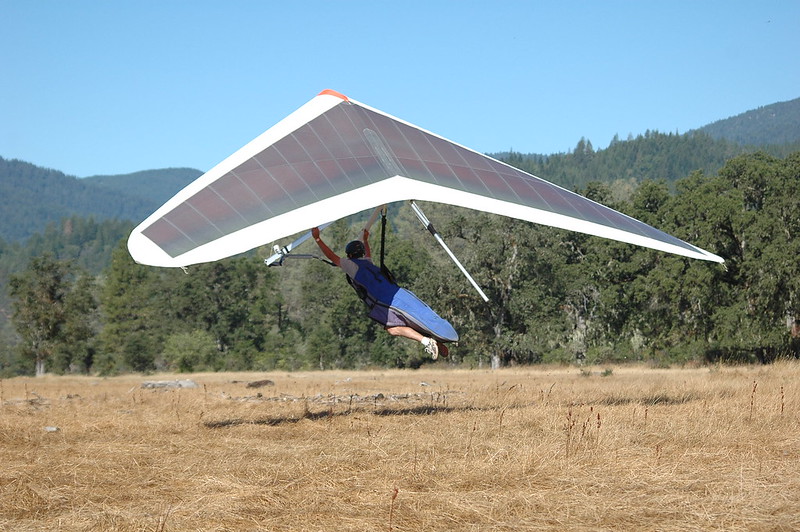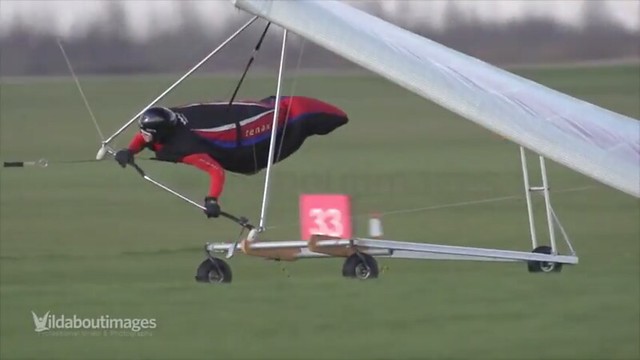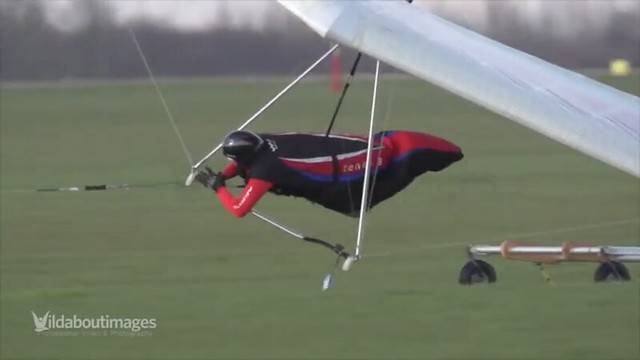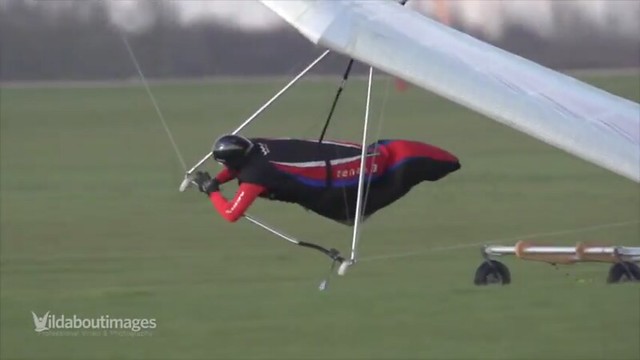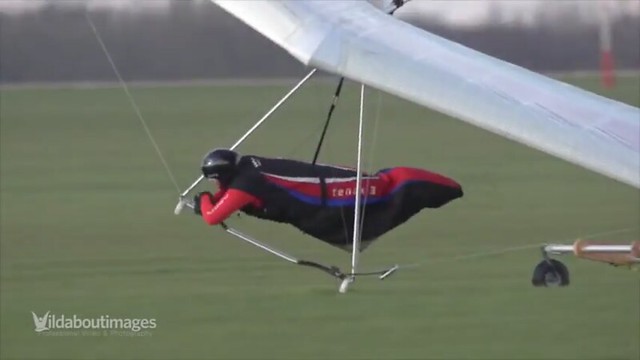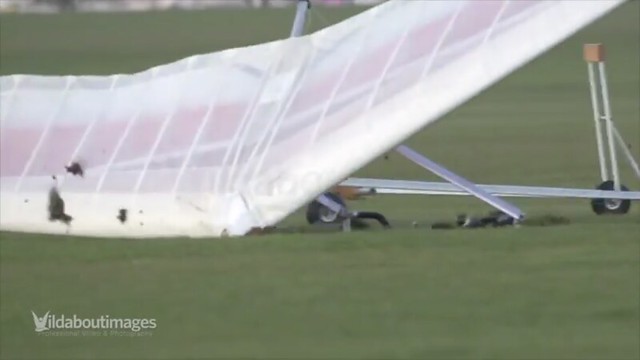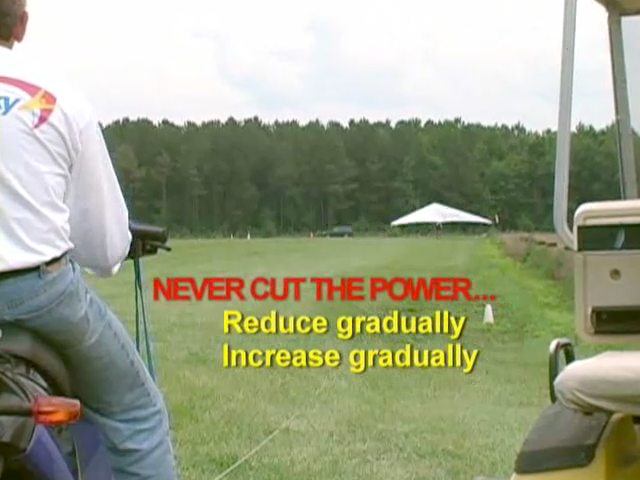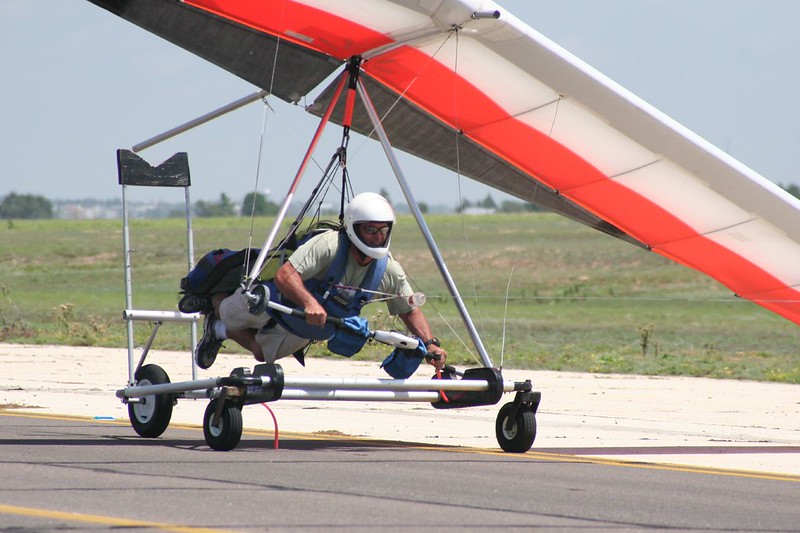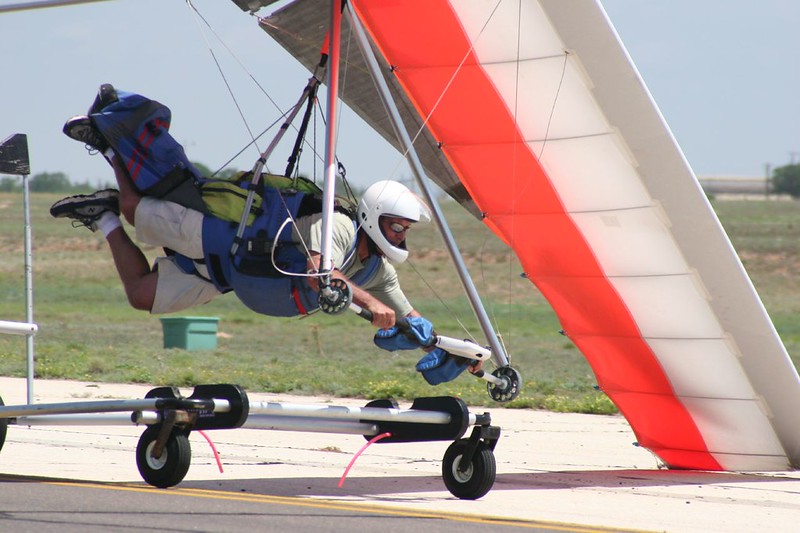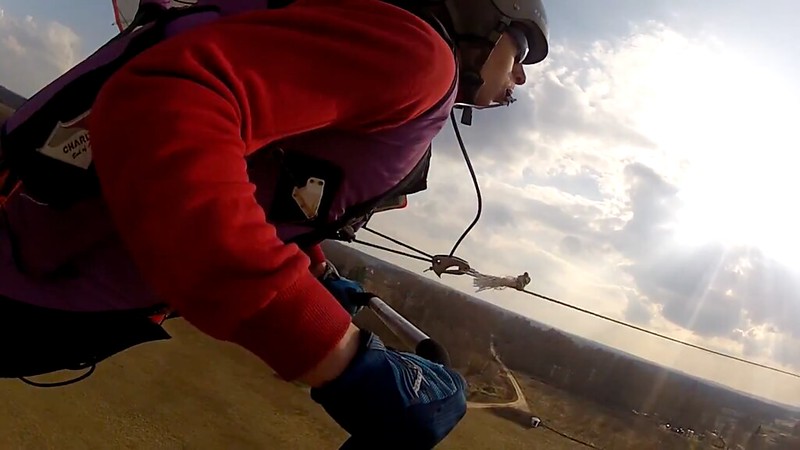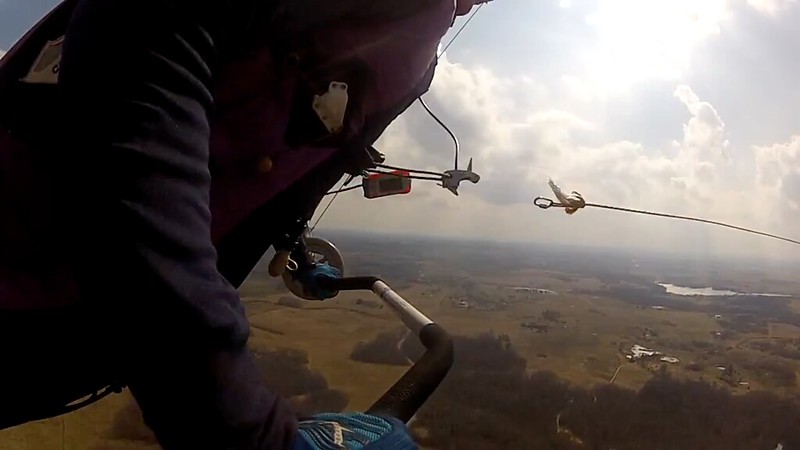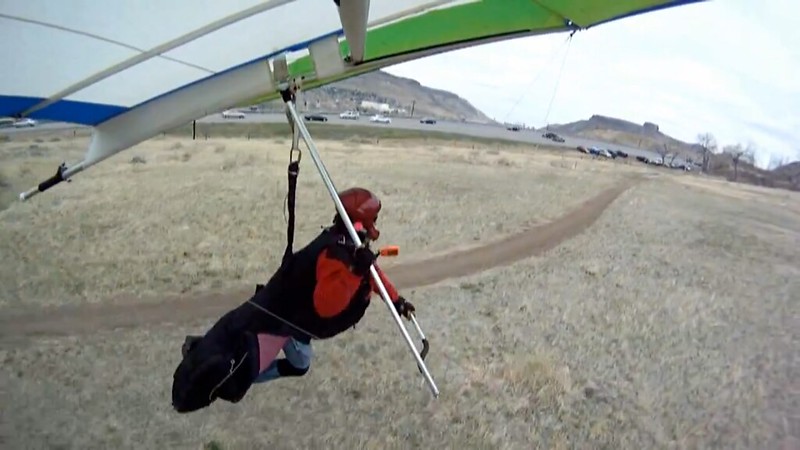DAMN! Just found this one. Motherfucker almost gets killed on launch and the post title is:
2014 East Coast Championship
so, big surprise, I think it's just Davis describing every bank angle of every turn of every climb he made on the latest four hour task.
http://ozreport.com/18.115
2014 East Coast Championship
John Claytor - 2014/06/13 16:42:43 UTC
To start with I have to mention that it is my opinion that when we start out on a line, whether it is surfing a wave, starting the roll down a trail on a mountain bike or launching a hang glider on a dolly, the start of the movement lacks good control until some speed is gathered to gain that control. At that point, the surfer, rider or pilot has the control to "fix" the track, make a correction and things work out fine. This was not the case on that day.
There are a couple of things that could have been changed and in hindsight; these may have avoided this incident. I felt that my angle of attack was too high, but thought that the powerful tug would pull me through the vulnerable phase of the roll without incident. Secondly, I should have waited for a wind cycle that was lesser in velocity and more from the direction that we were towing toward. Competitions don't really afford the time for a pilot to select a launch cycle or wait for conditions to improve.
At the instant that the roll commenced a gust of wind from the left occurred and lifted my left wing. I still had hold of the tubing in the cart as the left front wheel lifted. The dolly was going to the right. I must have released my hold on the left tubing to settle the cart level. At that point in time, my speed bar shifted to the right at about a 20 degree angle settling the inner portion of the speed bar onto the right chock and increasing the bank angle to the right as I was accelerating. The lowered position of my feet may have restricted my input of shifting my legs to the left to counteract the banking to the right. I pushed out to release myself and the glider from the cart. At this point the angle was increasing and the right wing tip hit the ground. My head was at about chest high, accelerating in what could be described as a low level lock-out, with no good control. I saw that I was going to hit the ground nearly head first and balled-up for impact. I hit hard, the weak-link broke and I broke the left down tube and the glider rolled on the right leading edge transitioning to the left leading edge before coming to rest kind of backward.
I impacted the ground on the right side of my helmet and right shoulder simultaneously, then sliding on my left side to a stop. I had pain in my right shoulder and collar bone, lower neck, left scapula and center of my back. I elected to just take it easy for a few days and I flew again the following Friday (2014/06/06). I had intended to fly the task, but once I was in the air, it became apparent that I would not be fit for flight after up to three hours. I landed at the airport after 30 minutes. The next day (Saturday (2014/06/07)) I flew for about 40 minutes before the competition pilots would launch. Still pretty sore. The following Tuesday (6/10/14 (2014/06/10)) I serious pain in my back at work and decided to go to the hospital for some test. At the hospital I had several x-rays and then a CT scan. They found that I did not have any fractures but I was complaining of the symptoms commensurate with a compressed or damaged disk. They prescribed muscle relaxer, opiate pain reliever and a steroid to reduce swelling. So far so good. I feel that this incident could have had a more serious outcome and I am glad that I was not injured any more than I was.
To start with I have to mention that it is my opinion that when we start out on a line, whether it is surfing a wave, starting the roll down a trail on a mountain bike or launching a hang glider on a dolly, the start of the movement lacks good control until some speed is gathered to gain that control. At that point, the surfer, rider or pilot has the control to "fix" the track, make a correction and things work out fine.
Oh. So you think it's a good idea to have some airspeed to control a fixed wing aircraft. And that's your OPINION. But you're totally open to the points of view of assholes like Sam Kellner and Bob Kuczewski. Good. That way you wouldn't be labeled as a know-it-all and you'll always be welcome in friendly hang gliding communities. Great job Steve Exceptionally-Knowledgeable Wendt.
This was not the case on that day.
Do ya think?
There are a couple of things that could have been changed and in hindsight; these may have avoided this incident.
One of the things that could've been changed and, in hindsight, WAS that could've avoided this incident, was to scrub the task and shut down launch. Any thoughts on that one?
I felt that my angle of attack was too high, but thought that the powerful tug would pull me through the vulnerable phase of the roll without incident.
What did your cart monkey think?
http://ozreport.com/12.081
Weaklinks - the HGFA rules
Davis Straub - 2008/04/22 14:47:00 UTC
It was required that pilots be able to be connected to the tow line quickly both in order to be fair to all pilots and get them in the air in time to compete with each other, as well as to promote safety. It is safer to have a simple uniform release/bridle system that the ground crew is familiar with and can determine if there is a problem. The simpler and more uniform the safer, system wide.
Getting pilots into the air quickly is also safer as it reduces the stress that pilots feel on the ground and keeps them focused on their job which is to launch safely and without hassling the ground crew or themselves. When we look at safety we have to look at the whole system, not just one component of that system. One pilot may feel that one component is unsafe from his point of view and desire a different approach, but accommodating one pilot can reduce the overall safety of the system.
You had an appropriate bridle and weak link so you were good to go? There were too many highly qualified people on the Safety Committee so's they didn't have enough left over for good cart monkeys? They just looked to see that they could snap the hardware store keychain carabiner they'd spent twenty years perfecting as a tow ring onto your bridle in two seconds or less and gave you the green?
Secondly, I should have waited for a wind cycle that was lesser in velocity and more from the direction that we were towing toward.
What should your tug driver have done? What was the weather like where he was 250 feet to the west? Was he aware that he was taking off with a glider behind him? Or was it OK for him to just gas it because...
http://www.chgpa.org/forums/viewtopic.php?f=2&t=3600
Weak link question
Jim Rooney - 2008/11/24 05:18:15 UTC
Well, I'm assuming there was some guff about the tug pilot's right of refusal?
Gee, didn't think we'd have to delve into "pilot in command"... I figured that one's pretty well understood in a flying community.
It's quite simple.
The tug is a certified aircraft... the glider is an unpowered ultralight vehicle. The tug pilot is the pilot in command. You are a passenger. You have the same rights and responsibilities as a skydiver.
It's a bitter pill I'm sure, but there you have it.
...he's flying a certified aircraft, you're an unpowered ultralight vehicle, and thus he's the Pilot In Command? You're just a passenger, he's good to go, if you don't like it you can go fuck yourself?
Competitions don't really afford the time for a pilot to select a launch cycle or wait for conditions to improve.
But they've obviously got plenty of time for digging competitors out of soybean fields, calling in ambulances for stunt landers at goal, calling in choppers for people who've had oscillation problems on approach, and removing wreckage from the runway before calling the day.
At the instant that the roll commenced a gust of wind from the left occurred and lifted my left wing.
So you just made the easy reach for the bent pin piece of crap posing as a release on your appropriate bridle and aborted the tow, right?
I still had hold of the tubing in the cart as the left front wheel lifted.
Oh. Both your hands were busy doing other stuff. Right. Sorry, I wasn't thinking.
The dolly was going to the right.
'Cause you had a glider at a mush angle of attack, a strong ninety left wind, and a gust on top to deal with? Who'da thunk.
I must have released my hold on the left tubing to settle the cart level.
Sounds like you could really have used four hands to deal with that situation. Do they allow tandems to compete?
At that point in time, my speed bar shifted to the right at about a 20 degree angle settling the inner portion of the speed bar onto the right chock and increasing the bank angle to the right as I was accelerating.
But you thought you could fix a bad thing and didn't want to start over. So you just decided to go for it anyway. Silly boy!
The lowered position of my feet may have restricted my input of shifting my legs to the left to counteract the banking to the right.
Sounds like a dolly design issue to me.
I pushed out to release myself...
Really? I just do something like THIS:
01-1225
http://c2.staticflickr.com/8/7436/13700570583_049b5b7ded_o.png
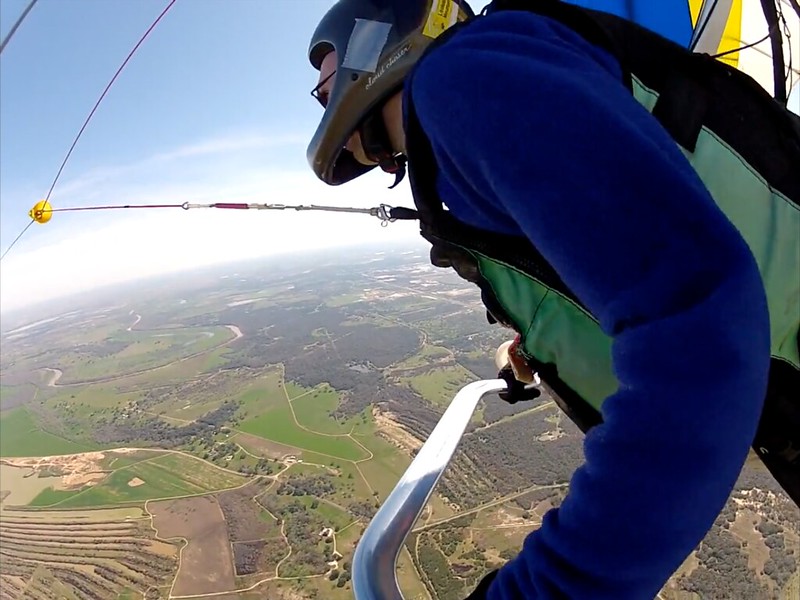
02-1302
http://c2.staticflickr.com/8/7117/13700891354_b31d51ed74_o.png
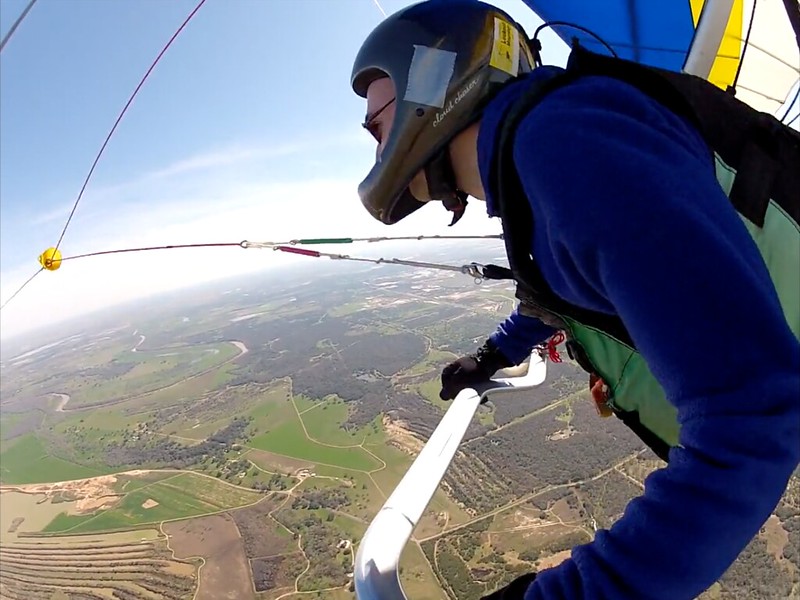
03-1304
http://c1.staticflickr.com/3/2938/13700558193_0e0946218e_o.png
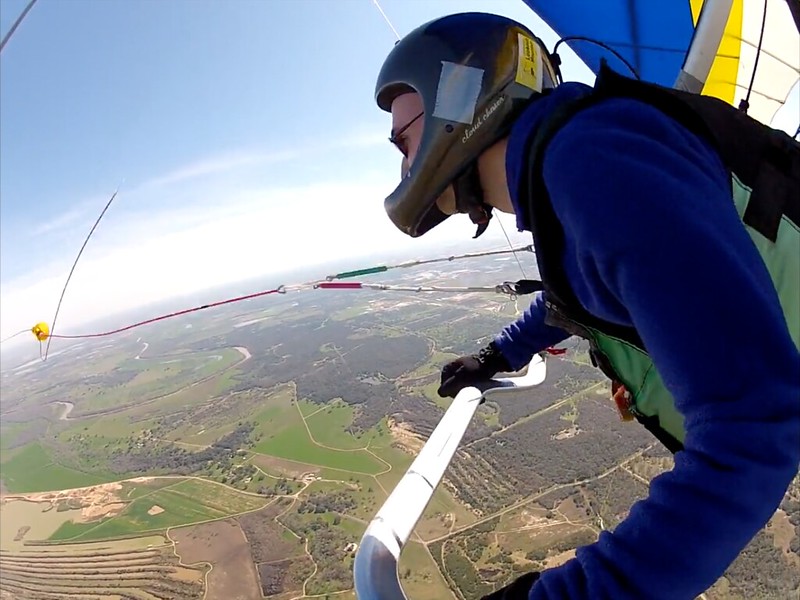
to release myself. What are you using for a release? Something like this:
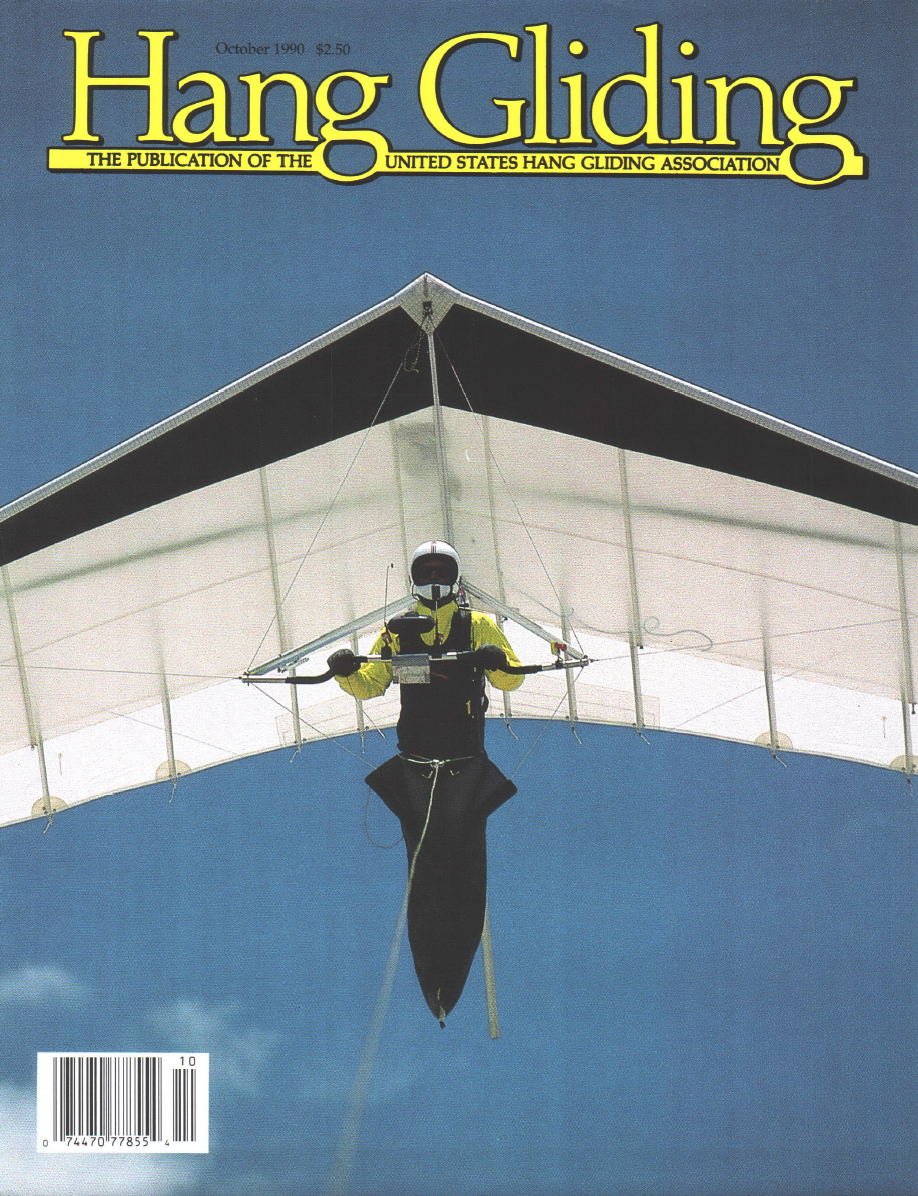
1990/03/29 - Brad Anderson - 24 - Novice - Flight Designs Javelin - platform tow - McMinnville, Oregon - head injury, ruptured thoracic aorta
"Strong novice" pilot with a lot of flying and some truck tow experience. With instructors present launched and rose to fifty feet over truck. Pushed out hard enough to release. Whip stalled and dove into the ground. Died instantly.
1990/07/05 - Eric Aasletten - 24 - Intermediate - 2-3 years - UP Axis - platform tow - Hobbs, New Mexico - fatal / head
Reasonably proficient intermediate with over a year of platform tow experience was launching during tow meet. Homemade ATOL copy with winch on the front of the truck. Immediately after launch, the glider pitched up sharply with nose very high. Apparently the angle caused an "auto release" of the towline from the pilot, who completed a hammerhead stall and dove into the ground. Observer felt that a dust devil, invisible on the runway, contributed or caused the relatively radical nose-up attitude. Also of concern was the presumed auto release which, if it had not occurred, might have prevented the accident. Severe head injury with unsuccessful CPR.
Brad Anderson / Eric Aasletten Special?
...and the glider from the cart.
Oh. You meant from the CART. Sorry, forgot you had no fuckin' way to release yourself from the TOW.
At this point the angle was increasing and the right wing tip hit the ground.
So what was your tug driver doing all this time? I was under the impression that these guys could...
http://www.chgpa.org/forums/viewtopic.php?f=2&t=2467
weak links
Jim Rooney - 2007/08/01 13:47:23 UTC
Whatever's going on back there, I can fix it by giving you the rope.
...fix whatever was going on back there by giving you the rope. Oh well, that probably just means when...
http://www.chgpa.org/forums/viewtopic.php?f=2&t=3600
Weak link question
Danny Brotto - 2008/11/04 12:49:44 UTC
I had the Axis on the cart with the AOA a bit high, launching to the west, with a moderate 90 degree cross from the left. I came out of the cart rolled and yawed to the right with the upwind wing flying and the downwind wing stalled. It was rather dramatic. If I had released or if the weak link had broken, the downwind wing would have further stalled and I would have cartwheeled into terra firma in an unpleasant fashion. I held on tight gaining airspeed until the downwind wing began flying, got in behind the tug, and continued the flight.
Sunny later told be he was about to give me the rope and I thanked him to no end that he didn't.
...you DON'T want them to.
My head was at about chest high, accelerating in what could be described as a low level lock-out, with no good control.
No. It can't be described as a low level lockout. Don't you think that if low level lockouts were possible in aerotowing that Ridgely, the Safety Committee, Davis Dead-On Straub, Jim Keen-Intellect Rooney would make sure you were equipped to deal with low level lockouts? You just had one of those just-froze / made-no-effort-to-release episodes.
I saw that I was going to hit the ground nearly head first and balled-up for impact.
Really? How come you didn't rotate upright, put both hands on the right downtube, and use your glider as a crush zone?
I hit hard, the weak-link broke...
Oh! NOW it breaks! AFTER you've gotten into too much trouble. Fuckin' Tad-O-Link! Lucky you weren't dragged!
...and I broke the left down tube and the glider rolled on the right leading edge transitioning to the left leading edge before coming to rest kind of backward.
If you'd used an APPROPRIATE weak link it would've provided a safe limit on the tow force - such that when you failed to maintain the correct tow position (centered, with the wheels of the tug on the horizon) it would've broken before you could've got into too much trouble.
I impacted the ground on the right side of my helmet and right shoulder simultaneously, then sliding on my left side to a stop. I had pain in my right shoulder and collar bone, lower neck, left scapula and center of my back. I elected to just take it easy for a few days and I flew again the following Friday. I had intended to fly the task, but once I was in the air, it became apparent that I would not be fit for flight after up to three hours. I landed at the airport after 30 minutes. The next day (Saturday) I flew for about 40 minutes before the competition pilots would launch. Still pretty sore. The following Tuesday (6/10/14) I serious pain in my back at work and decided to go to the hospital for some test.
Might as well. Since you were just a passenger and your Pilot In Command's responsibility he's covering all the medical and repair costs, right? And, of course, Ridgely refunded your entry and tow fees fees, right?
Or is this "Pilot In Command" bullshit all privileges and zero responsibilities?
At the hospital I had several x-rays and then a CT scan. They found that I did not have any fractures but I was complaining of the symptoms commensurate with a compressed or damaged disk.
Talk to NMERider. He knows all about that sort of thing from his experience in learning to land gliders more safely.
They prescribed muscle relaxer, opiate pain reliever and a steroid to reduce swelling.
And you've never once even heard of any of the technology that's been developed and used in Eastern Europe and right there at Ridgely - including stuff I've personally shown you - that could've arrested that situation before it got started.
And Steve Kinsley has said nothing.
And the scum running Ridgely has had no input/comment on this one whatsoever.
Used to read a fair amount of reports about fringers who'd pick up obsolete gliders at garage sales and run ropes between the gliders and the trailer hitches on the pickup trucks. Tell me how what you, Ridgely, Rooney, Davis, the Safety Committee did is ANY BETTER than that? The most important thing that's happened with hang glider towing since I first went up on a winch with a control frame bridle on 1980/11/14 is that fringing has become totally mainstream.
So far so good. I feel that this incident could have had a more serious outcome and I am glad that I was not injured any more than I was.
Like what? You think maybe getting quaded or killed? Think those are out of the range of possibilities?
You think that this one's getting the ink commensurate with the seriousness?
Steve Elliot had one very similar to this, broke his neck, and died. THIS:
http://ozreport.com/13.003
Davis Straub - 2009/01/03 21:50:24 UTC
Forbes, day one, task one
The final incident had greater consequences. Steve Elliot came off the cart crooked and things went from bad to worse as he augured in. He was helicoptered to Orange and eventually to Sydney where the prognosis is not good. I'll update as I find out more.
Davis Straub - 2009/01/04 10:23:14 UTC
Forbes, day two, task two
The prognosis for Steve Elliot (Missy) is still not good.
Davis Straub - 2009/01/05 11:09:11 UTC
Forbes, day three, task three
The news about Steve Elliot was not good. He didn't survive his accident. I want to express my condolences to his family and friends for their loss.
I read the accident report and Steve did not fly off the cart. His left wing started going down (this indicates that the wing is stalled and that the angle of the glider on the cart is too high) and Steve didn't initiate any actions to correct the problem.
The left wing went down further with the other wing rising, still no corrective action on Steve's part. His left wing contacted the ground and the glider "cartwheeled" in. The glider did not suffer any damage but Steve was fatally wounded.
This is an accident that didn't have to happen. All tow pilots need to check their angle on the cart. I have been raising the rear cradle on all the carts that I have used here. Pilots are responsible for checking their tow angle by getting on the cart and letting go of the base bar. If the base tube is in front of the trim position they need to raise the back cradle.
Pilots can also pull in when the cart starts to raise the keel above the cradle. But this is a trickier maneuver.
I will emphasize this issue (and other towing issues) at the next pilot meeting.
is pretty much the entirety of the attention/discussion he got.
Compare/Contrast with Joe Schmucker for example. Not a single syllable from...
http://www.hanggliding.org/viewtopic.php?t=16265
weaklinks
Kinsley Sykes - 2010/03/18 19:42:19 UTC
In the old threads there was a lot of info from a guy named Tad. Tad had a very strong opinion on weak link strength and it was a lot higher than most folks care for. I'd focus carefully on what folks who tow a lot have to say. Or Jim Rooney who is an excellent tug pilot. I tow with the "park provided" weak links. I think they are 130 pound Greenspot.
...Jim Keen-Intellect Rooney - even though it happened where he started hang gliding and tug driving and becoming the world's leading authority on everything. Where he's working right now - and as a driver for that comp.
Was he the asshole who pulled you into the crosswind, lockout, and ground?
If not, who was? And why hasn't he said a single public syllable on this one?
What a total shit heap of a sport and culture. Thanks bigtime for extending its track record.

